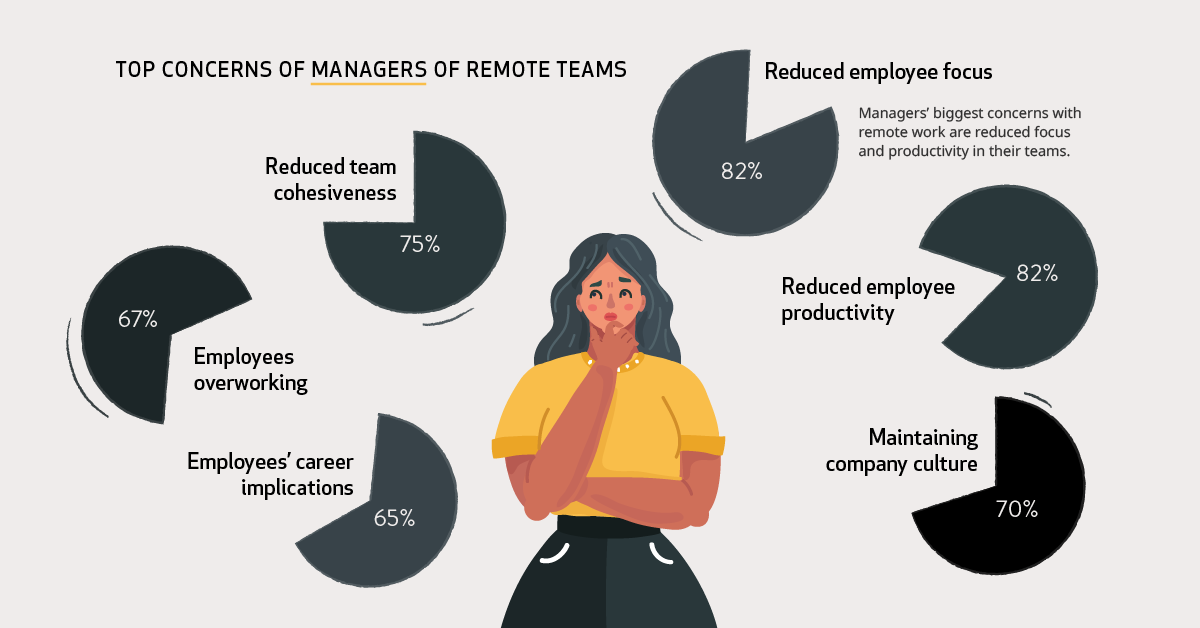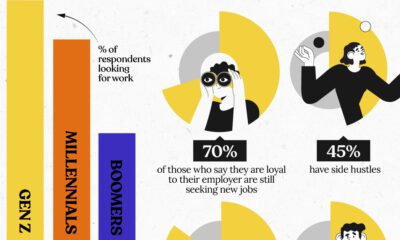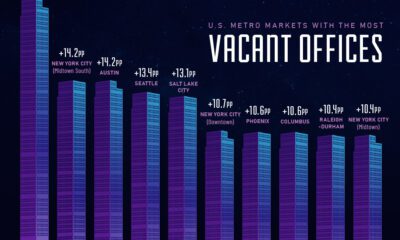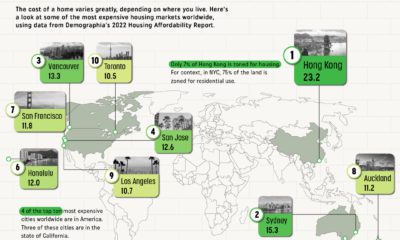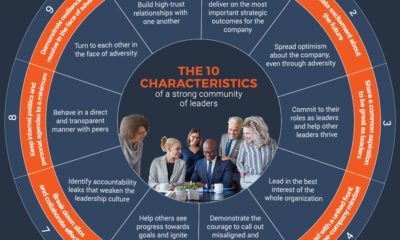Misc
How People and Companies Feel About Working Remotely
According to the U.S. Census Bureau, nearly one-third of the U.S. workforce, and half of all “information workers”, are able to work from home. Though the number of people working partially or fully remote has been on the rise for years now, the COVID-19 pandemic may have pressed the fast-forward button on this trend.
With millions of people taking part in this work-from-home experiment, it’s worth asking the question – how do people and companies actually feel about working from home?
The Flex Life
It’s no secret that people value freedom of choice. A whopping 98% of people would like to have the option to work remotely for the rest of their careers.
Aside from working in sweatpants, what are the things people like about working from home?
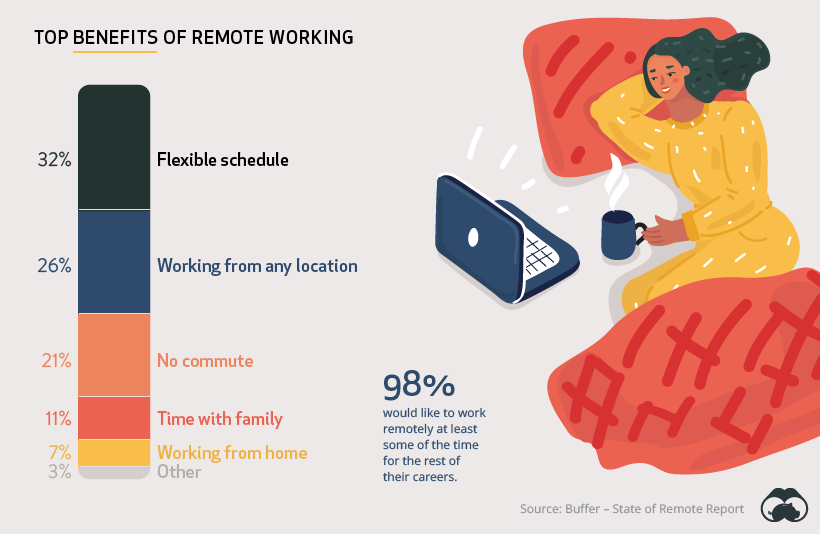
A flexible schedule, the ability to work from any location, and no more commuting were the top reported benefits.
Of course, not everything is positive about working from home. Here are some of the challenges people face as they work remotely.
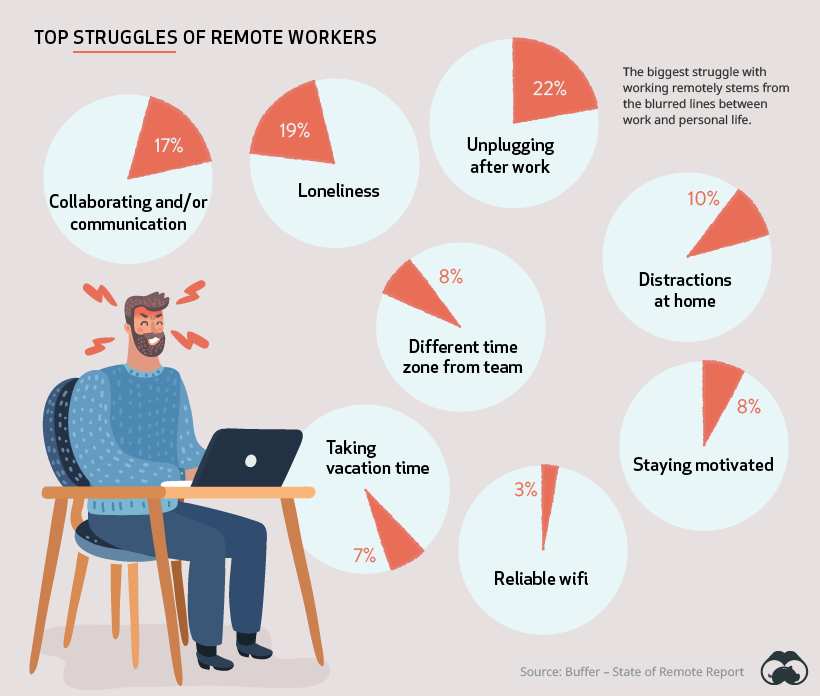
The top issue faced by remote workers was “unplugging” from work. Without the clear-cut change of location and defined office hours, many people had a tougher time clearly dividing their personal and professional time.
As well, the lack of person-to-person communication can be a challenge for some people. In fact, one-third of people were concerned that the full extent of their professional efforts wouldn’t be appreciated because of a lack of in-office contact.
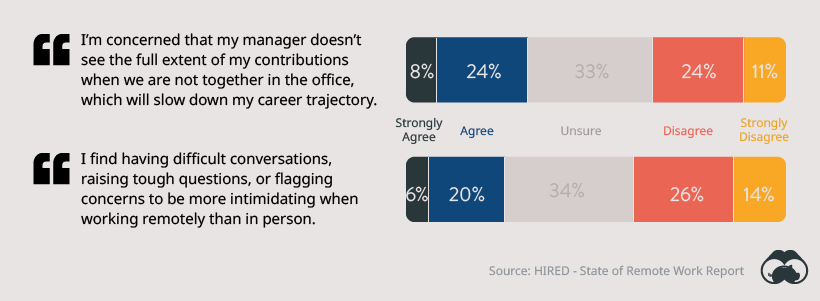
For the majority of people, having tough conversations via phone or teleconferencing software was actually viewed as a positive development.
Barriers to Implementing a Remote Work Policy
Despite the popularity of remote and flexible working, not every company has embraced the concept. Here are some of the reasons why.
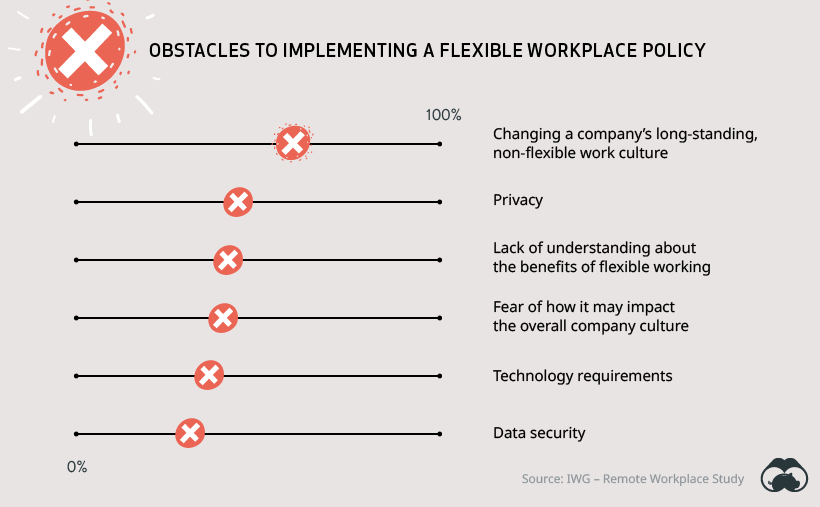
While there can be technical or security-related reasons behind remote work resistance, a major barrier is simple resistance to change. Over 50% of companies that didn’t have a flexible or remote workplace policy cited “longstanding company policy” as the reason. In other words, that is just the way things have always worked.
Here are the reservations managers have with remote work:
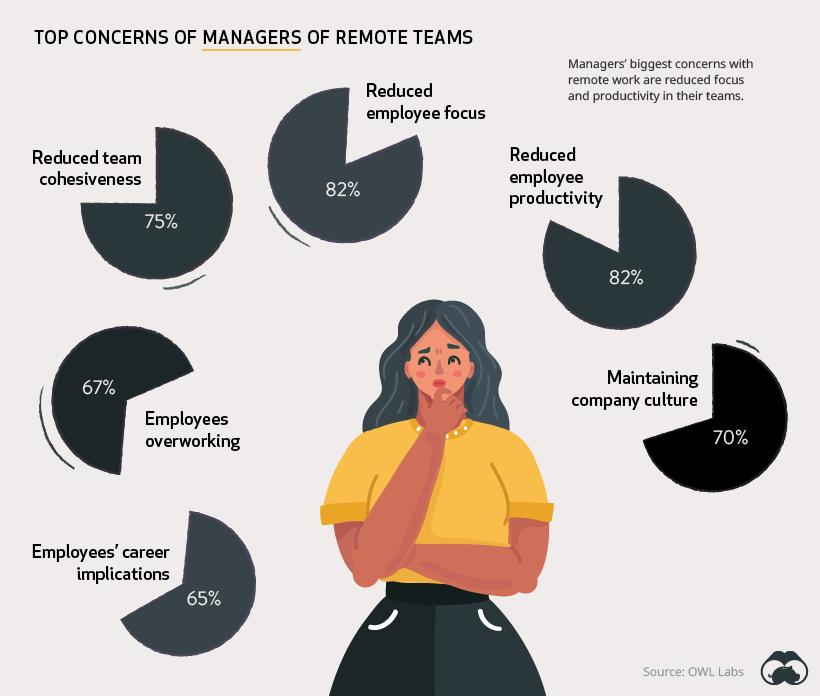
Managers are worried that productivity and focus will be diminished if people are working in more informal locations, such as home or a cafe. Also, if people aren’t working in the same physical location, managers feel that team cohesiveness and company culture could suffer.
On the flip side, the cost savings associated with remote work may win over many companies. Research has found that typical employer can save about $11,000 per year for every person who works remotely half of the time. As well, switching to virtual meets in some instances can also be a significant cost savings.
Flexibility: The Ultimate Perk?
Location flexibility isn’t just a way to keep current employees happy. Companies that don’t embrace flexible working may find themselves at a disadvantage when recruiting new talent. Nearly two-thirds of candidates say that having a choice of work location is a key consideration in choosing an employer.
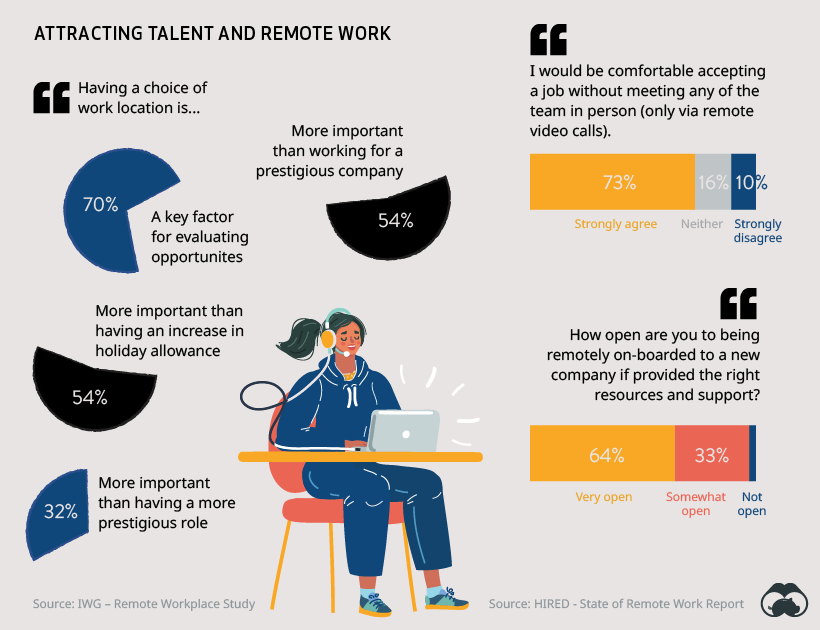
Lockdown measures have highlighted the value of workplace flexibility – particularly for people with kids. A total of 86% of parents now want to work flexibly, compared to 46% pre-coronavirus.
As the economy slowly begins to reopen, it remains to be seen whether or not COVID-19 accelerated inevitable trends in workplace culture. If so, taking Zoom calls in sweatpants may become the new normal for millions of workers.
Misc
How Hard Is It to Get Into an Ivy League School?
We detail the admission rates and average annual cost for Ivy League schools, as well as the median SAT scores required to be accepted.

How Hard Is It to Get Into an Ivy League School?
This was originally posted on our Voronoi app. Download the app for free on iOS or Android and discover incredible data-driven charts from a variety of trusted sources.
Ivy League institutions are renowned worldwide for their academic excellence and long-standing traditions. But how hard is it to get into one of the top universities in the U.S.?
In this graphic, we detail the admission rates and average annual cost for Ivy League schools, as well as the median SAT scores required to be accepted. The data comes from the National Center for Education Statistics and was compiled by 24/7 Wall St.
Note that “average annual cost” represents the net price a student pays after subtracting the average value of grants and/or scholarships received.
Harvard is the Most Selective
The SAT is a standardized test commonly used for college admissions in the United States. It’s taken by high school juniors and seniors to assess their readiness for college-level academic work.
When comparing SAT scores, Harvard and Dartmouth are among the most challenging universities to gain admission to. The median SAT scores for their students are 760 for reading and writing and 790 for math. Still, Harvard has half the admission rate (3.2%) compared to Dartmouth (6.4%).
| School | Admission rate (%) | SAT Score: Reading & Writing | SAT Score: Math | Avg Annual Cost* |
|---|---|---|---|---|
| Harvard University | 3.2 | 760 | 790 | $13,259 |
| Columbia University | 3.9 | 750 | 780 | $12,836 |
| Yale University | 4.6 | 760 | 780 | $16,341 |
| Brown University | 5.1 | 760 | 780 | $26,308 |
| Princeton University | 5.7 | 760 | 780 | $11,080 |
| Dartmouth College | 6.4 | 760 | 790 | $33,023 |
| University of Pennsylvania | 6.5 | 750 | 790 | $14,851 |
| Cornell University | 7.5 | 750 | 780 | $29,011 |
*Costs after receiving federal financial aid.
Additionally, Dartmouth has the highest average annual cost at $33,000. Princeton has the lowest at $11,100.
While student debt has surged in the United States in recent years, hitting $1.73 trillion in 2023, the worth of obtaining a degree from any of the schools listed surpasses mere academics. This is evidenced by the substantial incomes earned by former students.
Harvard grads, for example, have the highest average starting salary in the country, at $91,700.
-

 Maps2 weeks ago
Maps2 weeks agoMapped: Average Wages Across Europe
-

 Money1 week ago
Money1 week agoWhich States Have the Highest Minimum Wage in America?
-

 Real Estate1 week ago
Real Estate1 week agoRanked: The Most Valuable Housing Markets in America
-

 Markets1 week ago
Markets1 week agoCharted: Big Four Market Share by S&P 500 Audits
-

 AI1 week ago
AI1 week agoThe Stock Performance of U.S. Chipmakers So Far in 2024
-

 Automotive1 week ago
Automotive1 week agoAlmost Every EV Stock is Down After Q1 2024
-

 Money2 weeks ago
Money2 weeks agoWhere Does One U.S. Tax Dollar Go?
-

 Green2 weeks ago
Green2 weeks agoRanked: Top Countries by Total Forest Loss Since 2001




